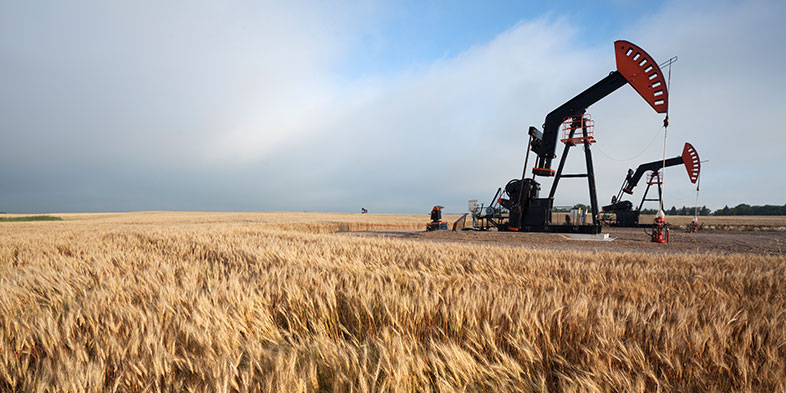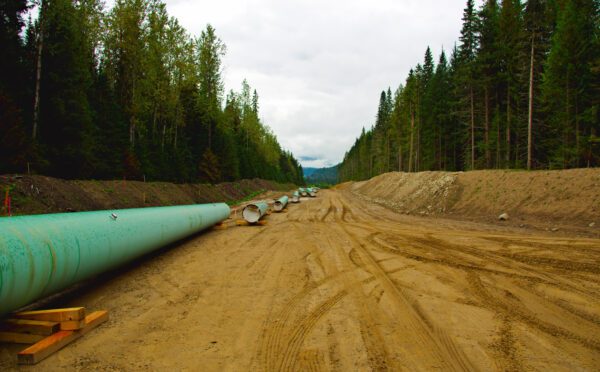Authors
Associate, Regulatory, Indigenous and Environmental, Calgary
Calgary Managing Partner, Calgary

In the coming months, it is expected that Canada will publish its final Clean Fuel Regulations under the Canadian Environmental Protection Act, 1999,[1] bringing a Canadian Clean Fuel Standard (CFS) into law.[2] The CFS is set to come into effect in December 2022.
The CFS targets carbon emission reductions in liquid fossil fuels, primarily used in transportation, and is expected to spur innovation and economic growth in the low-carbon fuels sector. The government’s expectation is that, over time, the CFS should drive consumer choice toward low-carbon energy sources for transportation fuel (such as biofuel and electricity) by decreasing their price while increasing the price of liquid fossil fuels.[3]
This post sets out the CFS’s obligations and compliance options for those domestically producing or importing 400 cubic metres (m3) or more of liquid fossil fuel for use in Canada, and highlights opportunities for low-carbon and no-carbon fuel producers to generate compliance credits. It also discusses British Columbia’s success with a similar approach under its Low Carbon Fuel Standard.
CFS fuel-specific carbon intensity limits
The CFS will replace the current Renewable Fuels Regulations (RFRs),[4] established in August 2010. The RFRs require petroleum fuel producers and importers to have an average renewable content of at least 5% based on their volume of gasoline, and an average renewable content of at least 2% based on their volume of diesel fuel and heating distillate oil.[5]
Unlike the RFRs, the proposed CFS requires GHG reductions on a lifecycle basis, accounting for emissions from production to end use. The proposed CFS will set annual lifecycle carbon intensity (CI) limits per type of liquid fossil fuel. These limits will be expressed in grams of carbon dioxide equivalent per megajoule (gCO2e/MJ) to account for the CI of the energy product. In addition to CI limits, the proposed CFS retains the RFR’s minimum volumetric requirements.[6]
Coming into force in December 2022, CI reduction requirements for liquid fossil fuels are expected to start at a 2.4-gCO2e/MJ CI reduction against prescribed baseline CI values for each fossil fuel type. These reduction requirements will increase at a rate of 1.2-gCO2e/MJ per year, reaching a 12-gCO2e/MJ CI reduction against the prescribed baselines by 2030. CI reduction requirements may apply to gasoline, diesel, kerosene and light and heavy fuel oils.[7] Reduction obligations will apply to “primary suppliers” who domestically produce or import at least 400 cubic metres of liquid fossil fuel for use in Canada.[8] The CI reduction rules will be subject to some exemptions,[9] and will not apply to non-fossil fuels such as biodiesel, bioalcohols like methanol, ethanol and butanol produced from biological sources, and hydrogen.
Primary suppliers will be required to meet their reduction requirement, expressed in tonnes of carbon dioxide equivalent (tCO2e), on a company-wide basis, summing up the reduction requirements for each liquid fossil fuel type for all of the company’s production facilities and imports based on the energy content of each fuel.[10]
Compliance credits and credit market
The proposed CFS contains provisions to establish a market for credits produced for compliance with the CFS’s CI reduction requirements. The credit market provides primary producers with alternative compliance options and low-carbon energy producers with opportunities to generate revenue through voluntarily creating credits.
Under the CFS, primary suppliers will generate a credit for every lifecycle emission reduction of one tCO2e. These credits can be used to satisfy the supplier’s own CI reduction requirements, or the supplier can sell their surplus credits to other primary suppliers. In each compliance period (usually one year), primary suppliers will need to show compliance with their reduction requirement by providing the required number of credits for compliance. Once used for compliance, the credits will be cancelled.[11]
To meet the minimum volumetric requirements retained from the RFRs, primary suppliers will also have to demonstrate that in each compliance period, of the total number of compliance credits it used for compliance, a minimum (5% of its gasoline pool and 2% of its diesel and light fuel oil pool) is from low-CI fuels.[12]
Parties that are not primary suppliers under the CFS — including biofuel producers, EV charging site hosts, fuel station owners/operators and upstream and downstream operations — will be able to participate voluntarily in the credit market to create credits and enter into credit-creation agreements with primary suppliers.[13] Credits will be created under three categories:[14]
- Compliance Category 1: actions throughout the lifecycle of a fossil fuel that reduce its CI through GHG emission reduction projects (e.g., carbon capture and storage)
- Compliance Category 2: producing or importing low-CI fuels
- Compliance Category 3: end-use fuel switching in transportation — an end user of fuel changes or retrofits their combustion devices to be powered by another fuel or energy source (e.g., switching to electric vehicles in transportation)
In addition, primary suppliers will be able to use compliance credits created by reducing the CI of gaseous and solid fuels (i.e., as opposed to liquid fuels) for a maximum of 10% of their liquid fuel class reduction requirement. These will include projects that reduce the lifecycle emissions of solid and gaseous fuels, and production and import of low-CI gaseous fuels (e.g., renewable natural gas, biogas, hydrogen, renewable propane).[15] To support the CFS’s implementation, Canada has published documents setting out quantification methods for market participants creating credits through low-CI electricity integration[16] and through CO2 capture and permanent storage,[17] as well as the methods verifiers and auditors will be required to use for validation, verification and certification of credits.[18]
Compliance funds
As an additional compliance option, primary producers seeking to meet their CI reduction requirements may discharge up to 10% of their annual obligation through payments into a compliance fund at a set price per tCO2e.[19] Credits secured through making a payment into a compliance fund cannot be traded and must be used for compliance in the same compliance period.[20]
Canada will maintain a list of approved funds. Eligible funds must use contributions only to finance projects and activities in Canada “that support the demonstration, commercialization or deployment of technologies or processes that reduce greenhouse gas emissions”, and that will achieve emissions reductions in the short term. Other eligibility criteria are designed to ensure the funds’ transparency, sound management and independence.[21]
Though just one of several compliance options available to primary suppliers under the CFS, the compliance fund mechanism should boost finance for emissions-reducing technologies in Canada, spurring green economic development, green employment, and near-term emissions reductions.
British Columbia’s Low Carbon Fuel Standard
British Columbia (B.C.) is the only province that currently applies CI reduction requirements to its producers and importers. B.C.’s Greenhouse Gas Reduction (Renewable and Low Carbon Fuel Requirements) Act and Renewable and Low Carbon Fuel Requirements Regulation (together, “Low Carbon Fuel Standard”) set reduction requirements that target a 20% reduction in CI by 2030, 8% higher than the proposed CFS’s target.
B.C.’s Low Carbon Fuel Standard currently exempts those producing or importing less than 25-million litres (25,000 cubic metres) of diesel or gasoline fuels from the CI requirements. This is a significantly higher volume exemption than under the proposed CFS, which will apply CI reduction requirements to all persons supplying 400 cubic metres or more of liquid fossil fuels.
To comply with B.C.’s CI reduction requirements, a B.C. fuel supplier can
- reduce the carbon intensities of the fuels it supplies year-over-year to meet the prescribed targets
- buy credits from other fuel suppliers
- earn credits through “Part 3 Agreements” to take actions which have a reasonable possibility of reducing GHG emissions sooner than would occur without the agreed-upon action
The Low Carbon Fuel Standard is considered one of B.C.’s most successful emissions reduction initiatives, and is expected to achieve CO2 emission reductions of 4.24-million tonnes per year in the province, under its current CI reduction target.[22] Between 2010 and 2017, B.C.’s Low Carbon Fuel Standard avoided an estimated 7.7-million tonnes of CO2 emissions.[23]
For more information, please see our overview of B.C.’s Low Carbon Fuel Standard framework and other emissions reduction legislation..
[1] SC 1999, c. 33.
[2] Final regulations are anticipated in late 2021. Proposed regulations were published on December 19, 2020: Canada Gazette, Part 1, Vol 154, No 51: Clean Fuel Regulations (19 December 2020) online: https://canadagazette.gc.ca/rp-pr/p1/2020/2020-12-19/html/reg2-eng.html (Proposed CFS).
[3] See Proposed CFS, Regulatory Impact Analysis Statement, Market-based approach – Increasing the carbon price and Costs and benefits.
[4] SOR 2010-189.
[5] RFRs, ss. 5(1) and (2).
[6] Proposed CFS, ss. 5(1) and 6(1).
[7] Proposed CFS, ss. 4(1) and (2).
[8] Proposed CFS, s. 1(1) “primary supplier” and 3(1).
[9] Proposed exceptions include liquid fuel that is: aviation gasoline, exported from Canada, fuel used in most scientific research, fuel for competition vehicles including marine vessels, for a use other than combustion, for use in a marine vessel with a non-Canadian pot destination, or used for non-industrial purposes in a remote area: Proposed CFS, ss. 3(2) and 7(2).
[10] Proposed CFS, ss. 7 and 8.
[11] Proposed CFS, s. 10.
[12] Proposed CFS, ss. 11(1) and (2).
[13] Proposed CFS, ss. 80(1), 81(1), 82(1), 84(1), 85(1), 86(1), 87(1), 88(1), 90(1), 91(1), and 21.
[14] Proposed CFS, s. 18.
[15] Proposed CFS, ss. 14(2), 19, 20.
[16] Canada, Clean fuel regulations : quantification method for low carbon-intensity electricity integration (Gatineau, 2020) online: https://publications.gc.ca/site/eng/9.893169/publication.html.
[17] Canada, Clean fuel regulations : quantification method for CO2 capture and permanent storage (Gatineau, 2020) online: https://publications.gc.ca/site/eng/9.893172/publication.html.
[18] Canada, Clean fuel regulations : method for validation, verification and certification (Gatineau, 2020) online: https://publications.gc.ca/site/eng/9.893174/publication.html.
[19] Proposed CFS, ss. 14(1), 18(2), 101.
[20] Proposed CFS, ss. 102.
[21] Proposed CFS, ss. 96, 97, and Schedule 7; Canada, Clean Fuel Standard: proposed regulatory approach, 7.6 Compliance Fund Mechanism (13 November 2019) online: https://www.canada.ca/en/environment-climate-change/services/managing-pollution/energy-production/fuel-regulations/clean-fuel-standard/regulatory-approach.html#toc29.
[22] Ministry of Energy, Mines and Petroleum Resources, British Columbia, “British Columbia’s Low Carbon Fuel Requirements” (4 October 2019) online, Washington Legislature: https://leg.wa.gov/JTC/Meetings/Documents/Agendas/2019%20Agendas/October%20Tour%202019/BCLowCarbon.pdf [PDF]
[23] Jade McLean and Marla Orenstein, “For B.C., clean fuel standard is familiar — but different” (14 June 2019) online, Canada West Foundation: https://cwf.ca/research/publications/op-ed-for-b-c-clean-fuel-standard-is-familiar-but-different/.

